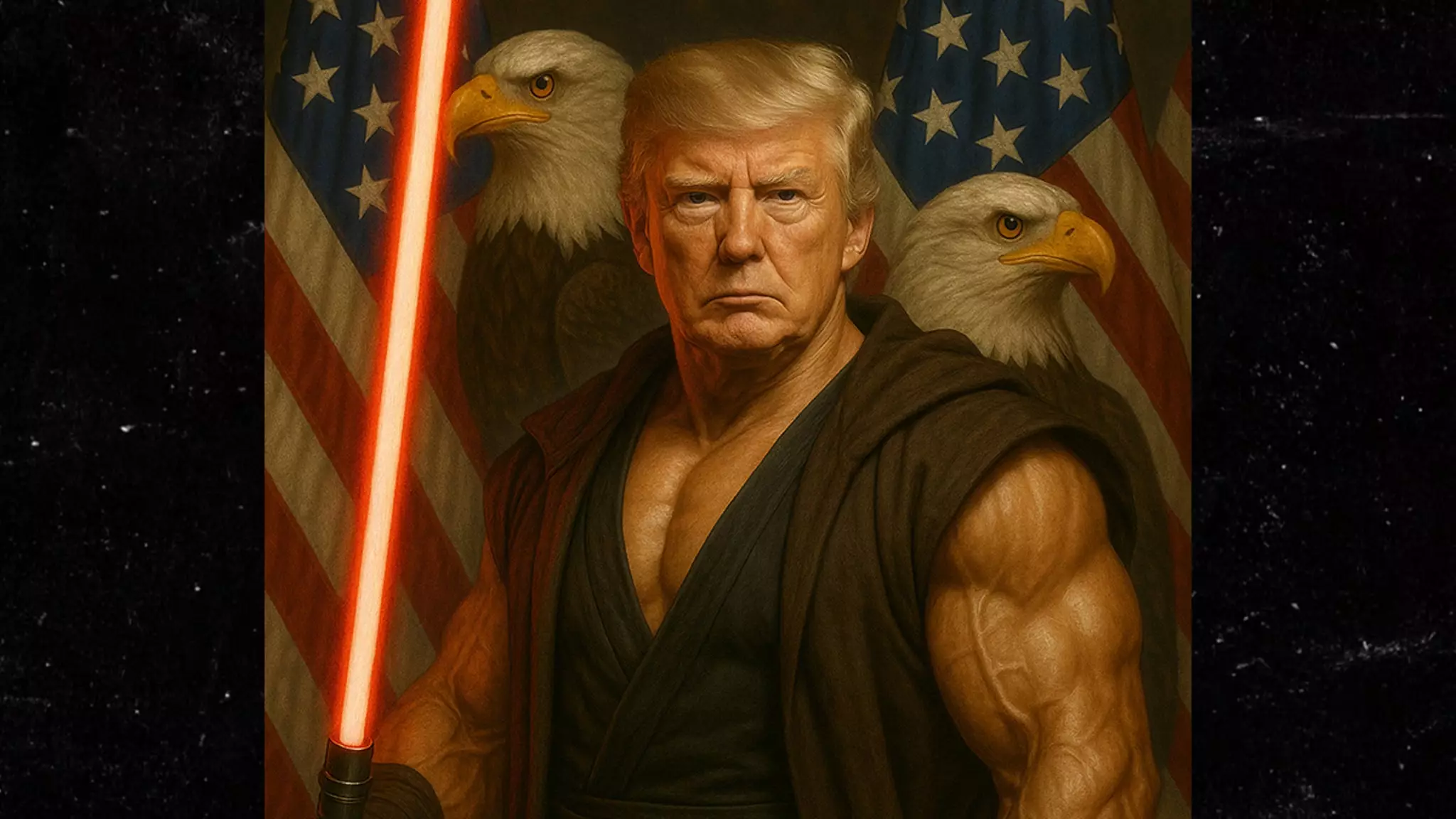In an audacious blend of politics and pop culture, the White House recently embraced Star Wars Day by unveiling an artificial intelligence-generated image of Donald Trump as a Sith Lord. This symbolic portrayal, showcasing Trump in a menacing sleeveless cloak brandishing a blood-red lightsaber, overlays his political persona with a layer of theatricality that both intrigues and disturbs. The image, steeped in visual rhetoric, transcends a mere gimmick; it attempts to craft a narrative that positions Trump not as a leader in the traditional, heroic sense but rather as a formidable, authoritarian figure tapping into the darker aspects of power.
A Colorful Misinterpretation or Intentional Symbolism?
The choice of a crimson lightsaber resonates with significant historical and cultural implications. Traditionally wielded by the Sith—the malevolent counterparts to the Jedi—the red lightsaber signifies anger, aggression, and a thirst for control. In juxtaposing his persona with that of the dark side, Trump’s portrayal implicitly invites comparisons to authoritarian regimes and historical villains, evoking chilling reminders of George Lucas’s inspirations for the Galactic Empire, notably mirroring traits of the Nazi regime. This optical alignment is not merely accidental; it serves a purpose in a meticulously crafted narrative framework aimed at rallying his base while simultaneously aggravating his opposition.
Despite the potential for backlash, the White House attempted to frame this provocative imagery positively, declaring it a celebratory Easter egg for both supporters and detractors alike. The proclamation suggested that those who oppose Trump are aligned with the very Empire he embodies, transforming political discourse into a Sith-versus-Jedi saga. Such rhetoric effectively demonizes the opposition while glorifying Trump’s self-styled dominance. However, rather than uniting or celebrating, this approach perpetuates division and scrutiny, delving deeper into the chasm of partisan politics.
Polarization through Pop Culture
It’s worth noting, however, that the immediate blowback from liberal audiences highlighted the absurdity of using Star Wars—a narrative fundamentally about hope, rebellion, and the fight against tyranny—to promote a figure often seen as embodying those very traits. Critics swiftly pointed out that the portrayal undermines the core value system of the original saga, further embedding the notion that political leaders can seize on popular culture to distort narratives for personal gain.
Calls for fingers to be pointed, particularly toward Mark Hamill, the storied actor behind Luke Skywalker and a vocal Trump opponent, further exemplify how political motivations flexibly intertwine with cultural references. A response from Hamill could clarify or complicate the perceived implications of Trump’s association with the Star Wars mythology, highlighting the ongoing interplay between fandom and political identity.
In essence, Trump’s embrace of a darkly charged visual identity epitomizes the risks and rewards of using pop culture as a political tool, eliciting mixed reactions across the spectrum while raising questions about the broader implications of such images for our understanding of leadership and authority. It reflects a legacy where the boundaries of art, politics, and ideology are increasingly blurred, leaving observers grappling with competing realities in a highly polarized landscape.

Leave a Reply